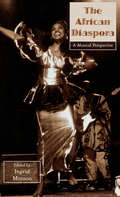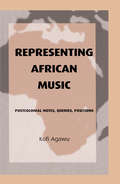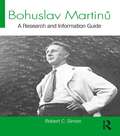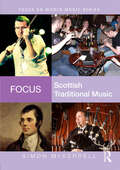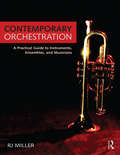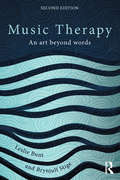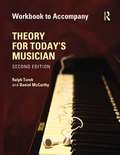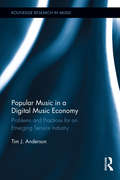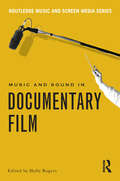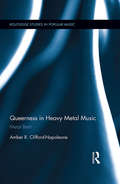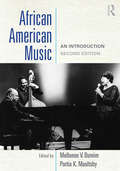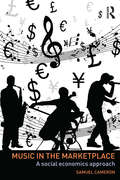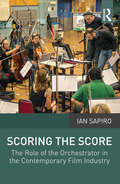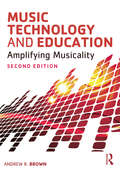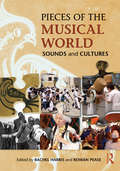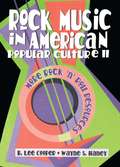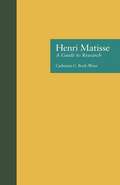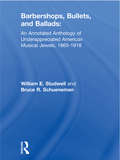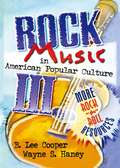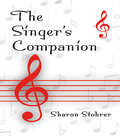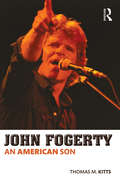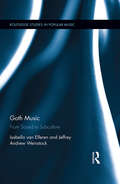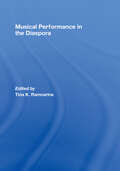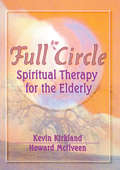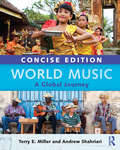- Table View
- List View
The African Diaspora: A Musical Perspective (Critical and Cultural Musicology)
by Ingrid MonsonThe African Diaspora presents musical case studies from various regions of the African diaspora, including Africa, the Caribbean, Latin America, North America, and Europe, that engage with broader interdisciplinary discussions about race, gender, politics, nationalism, and music. Featured here are jazz, wassoulou music, and popular and traditional musics of the Caribbean and Africa, framed with attention to the reciprocal relationships of the local and the global.
Representing African Music: Postcolonial Notes, Queries, Positions
by Kofi AgawuThe aim of this book is to stimulate debate by offering a critique of discourse about African music. Who writes about African music, how, and why? What assumptions and prejudices influence the presentation of ethnographic data? Even the term "African music" suggests there is an agreed-upon meaning, but African music signifies differently to different people. This book also poses the question then, "What is African music?" Agawu offers a new and provocative look at the history of African music scholarship that will resonate with students of ethnomusicology and post-colonial studies. He offers an alternative "Afro-centric" means of understanding African music, and in doing so, illuminates a different mode of creativity beyond the usual provenance of Western criticism. This book will undoubtedly inspire heated debate--and new thinking--among musicologists, cultural theorists, and post-colonial thinkers. Also includes 15 musical examples.
Bohuslav Martinů: A Research and Information Guide (Routledge Music Bibliographies)
by Robert SimonThis annotated bibliography uncovers the wealth of resources available to prospective researchers and supports emerging scholarship and inquiry into the life and music of this Czech composer. It includes all secondary sources on Martinu and his music, as well as chronology of his life and a complete list of works.
Focus: Scottish Traditional Music (Focus on World Music Series)
by Simon McKerrellFocus: Scottish Traditional Music engages methods from ethnomusicology, popular music studies, cultural studies, and media studies to explain how complex Scottish identities and culture are constructed in the traditional music and culture of Scotland. This book examines Scottish music through their social and performative contexts, outlining vocal traditions such as lullabies, mining songs, Scottish ballads, herding songs, and protest songs as well as instrumental traditions such as fiddle music, country dances, and informal evening pub sessions. Case studies explore the key ideas in understanding Scotland musically by exploring ethnicity, Britishness, belonging, politics, transmission and performance, positioning the cultural identity of Scotland within the United Kingdom. Visit the author's companion website at http://www.scottishtraditionalmusic.org/ for additional resources.
Contemporary Orchestration: A Practical Guide to Instruments, Ensembles, and Musicians
by R.J. MillerContemporary Orchestration: A Practical Guide to Instruments, Ensembles, and Musicians teaches students how to orchestrate for a wide variety of instruments, ensembles, and genres, while preparing them for various real-world professional settings ranging from the concert hall to the recording studio. Unlike most orchestration texts, it includes coverage of contemporary instruments and ensembles alongside traditional orchestra and chamber ensembles. Features Practical considerations: Practical suggestions for choosing a work to orchestrate, and what to avoid when writing for each instrument. Pedagogical features In the Profession: Professional courtesies, considerations and expectations. Building the Score: Step-by-step construction of an orchestration. Scoring Examples: Multiple scoring examples for each instrument. Exercises: Analyzing, problem solving, and creating orchestration solutions. Critical Thinking: Alternate approaches and solutions.
Music Therapy: An art beyond words (Ashgate Popular And Folk Music Ser.)
by Leslie Bunt Brynjulf StigeMusic therapy is recognised as being applicable to a wide range of healthcare and social contexts. Since the first edition of Music Therapy: An art beyond words, it has extended into areas of general medicine, mainstream education and community practice. This new edition revises the historical and theoretical perspectives and recognises the growing evidence and research base in contemporary music therapy. Leslie Bunt and Brynjulf Stige document the historical evolution of music therapy and place the practice within seven current perspectives: medical, behavioural, psychoanalytical, humanistic, transpersonal, culture-centred and music-centred. No single perspective, individual or group approach is privileged, although the focus on the use of sounds and music within therapeutic relationships remains central. Four chapters relate to areas of contemporary practice across different stages of the lifespan: child health, adolescent health, adult health and older adult health. All include case narratives and detailed examples underpinned by selected theoretical and research perspectives. The final two chapters of the book reflect on the evolution of the profession as a community resource and the emergence of music therapy as an academic discipline in its own right. A concise introduction to the current practice of music therapy around the world, Music Therapy: An art beyond words is an invaluable resource for professionals in music therapy and music education, those working in the psychological therapies, social work and other caring professions, and students at all levels.
Theory for Today's Musician Workbook, Second Edition (eBook)
by Ralph Turek Daniel McCarthyThe package (ISBN 978-0-415-73036-5) contains the second edition of Theory for Today’s Musician (ISBN: 978-0-415-66332-8) and the Theory for Today’s Musician Workbook (ISBN: 978-0-415-66333-5). The package is available for print books only. Ebook users should purchase the textbook and workbook separately. This workbook accompanies the second edition of Theory for Today's Musician and is full of exercises to help students practice and master the concepts presented in each chapter. Audio files are included.
Popular Music in a Digital Music Economy: Problems and Practices for an Emerging Service Industry (Routledge Research in Music)
by Tim J. AndersonIn the late 1990s, the MP3 became the de facto standard for digital audio files and the networked computer began to claim a significant place in the lives of more and more listeners. The dovetailing of these two circumstances is the basis of a new mode of musical production and distribution where new practices emerge. This book is not a definitive statement about what the new music industry is. Rather, it is devoted to what this new industry is becoming by examining these practices as experiments, dedicated to negotiating what is replacing an "object based" industry oriented around the production and exchange of physical recordings. In this new economy, constant attention is paid to the production and licensing of intellectual property and the rise of the "social musician" who has been encouraged to become more entrepreneurial. Finally, every element of the industry now must consider a new type of audience, the "end user", and their productive and distributive capacities around which services and musicians must orient their practices and investments.
Music and Sound in Documentary Film: Real Listening
by Holly RogersThis collection of fourteen essays provides a rich and detailed history of the relationship between and music and image in documentary films, exploring the often overlooked role of music in the genre and its subsequent impact on an audience’s perception of reality and fiction. Exploring examples of documentary films which make use of soundtrack music, from an interdisciplinary perspective, Music and Sound in Documentary Film is the first in-depth treatment on the use of music in the nonfiction film and will appeal to scholars and students working in the intersection of music and film and media studies.
Queerness in Heavy Metal Music: Metal Bent (Routledge Studies in Popular Music)
by Amber R. Clifford-NapoleoneWhile the growing field of scholarship on heavy metal music and its subcultures has produced excellent work on the sounds, scenes, and histories of heavy metal around the world, few works have included a study of gender and sexuality. This cutting-edge volume focuses on queer fans, performers, and spaces within the heavy metal sphere, and demonstrates the importance, pervasiveness, and subcultural significance of queerness to the heavy metal ethos. Heavy metal scholarship has until recently focused almost solely on the roles of heterosexual hypermasculinity and hyperfemininity in fans and performers. The dependence on that narrow dichotomy has limited heavy metal scholarship, resulting in poorly critiqued discussions of gender and sexuality that serve only to underpin the popular imagining of heavy metal as violent, homophobic and inherently masculine. This book queers heavy metal studies, bringing discussions of gender and sexuality in heavy metal out of that poorly theorized dichotomy. In this interdisciplinary work, the author connects new and existing scholarship with a strong ethnographic study of heavy metal’s self-identified queer performers and fans in their own words, thus giving them a voice and offering an original and ground-breaking addition to scholarship on popular music, rock, and queer studies.
African American Music: An Introduction
by Portia K. Maultsby Mellonee V. BurnimAmerican Music: An Introduction, Second Edition is a collection of seventeen essays surveying major African American musical genres, both sacred and secular, from slavery to the present. With contributions by leading scholars in the field, the work brings together analyses of African American music based on ethnographic fieldwork, which privileges the voices of the music-makers themselves, woven into a richly textured mosaic of history and culture. At the same time, it incorporates musical treatments that bring clarity to the structural, melodic, and rhythmic characteristics that both distinguish and unify African American music. The second edition has been substantially revised and updated, and includes new essays on African and African American musical continuities, African-derived instrument construction and performance practice, techno, and quartet traditions. Musical transcriptions, photographs, illustrations, and a new audio CD bring the music to life.
Music in the Marketplace: A social economics approach
by Samuel CameronMuch recent economic work on the music industry has been focused on the impact of technology on demand, with predictions being made of digital copyright infringement leading to the demise of the industry. In fact, there have always been profound cyclical swings in music media sales owing to the fact that music always has been, and continues to be, a discretionary purchase. This entertaining and accessible book offers an analysis of the production and consumption of music from a social economics approach. Locating music within the economic analysis of social behaviour, this books guides the reader through issues relating to production, supply, consumption and trends, wider considerations such as the international trade in music, and in particular through divisions of age, race and gender. Providing an engaging overview of this fascinating topic, this book will be of interest and relevance to students and scholars of cultural economics, management, musicology, cultural studies and those with an interest in the music industry more generally.
Scoring the Score: The Role of the Orchestrator in the Contemporary Film Industry
by Ian SapiroScoring the Score is the first scholarly examination of the orchestrator’s role in the contemporary film industry. Orchestrators are crucial to the production of a film’s score, yet they have not received significant consideration in film-music research. This book sheds light on this often-overlooked yet vital profession. It considers the key processes of orchestrating and arranging and how they relate, musical and filmic training, the wide-ranging responsibilities of the orchestrator on a film-scoring project, issues related to working practices, the impact of technology, and the differences between the UK and US production processes as they affect orchestrators. Drawing on interviews with American and British orchestrators and composers, Scoring the Score aims to expose this often hidden profession through a rigorous examination of the creative process and working practices, and analysis of the skills, training and background common to orchestrators. It will appeal to scholars, students, and practitioners of film music.
Music Technology and Education: Amplifying Musicality
by Andrew BrownMusic Technology in Education lays out the principles of music technology and how they can be used to enhance musical teaching and learning in primary and secondary education. Previously published as Computers in Music Education, this second edition has been streamlined to focus on the needs of today’s music education student. It has been completely updated to reflect mobile technologies, social networks, rich media environments, and other technological advances. Topics include: Basic audio concepts and recording techniques Enhanced music instruction with interactive systems, web-based media platforms, social networking, and musicianship software Administration and management of technology resources Distance education and flexible learning Music Technology in Education provides a strong theoretical and philosophical framework for examining the use of technology in music education while outlining the tools and techniques for implementation in the classroom. Reflective Questions, Teaching Tips, and Suggested Tasks link technology with effective teaching practice. The companion website provides resources for deeper investigation into the topics covered in each chapter, and includes an annotated bibliography, website links, tutorials, and model projects.
Pieces of the Musical World: Sounds and Cultures
by Rachel Harris Rowan PeasePieces of the Musical World: Sounds and Cultures is a fieldwork-based ethnomusicology textbook that introduces a series of musical worlds each through a single "piece." It focuses on a musical sound or object that provides a springboard from which to tell a story about a particular geographic region, introducing key aspects of the cultures in which it is embedded, contexts of performance, the musicians who create or perform it, the journeys it has travelled, and its changing meanings. A collaborative venture by staff and research ethnomusicologists associated with the Department of Music at SOAS, University of London, Pieces of the Musical World is organized thematically. Three broad themes: "Place", "Spirituality" and "Movement" help teachers to connect contemporary issues in ethnomusicology, including soundscape studies, music and the environment, the politics of identity, diaspora and globalization, and music and the body. Each of the book's fourteen chapters highlights a single musical "piece" broadly defined, spanning the range of "traditional," "popular", "classical" and "contemporary" musics, and even sounds which might be considered "not music." Primary sources and a web site hosting recordings with interactive listening guides, a glossary of musical terms and interviews all help to create a unique and dynamic learning experience of our musical world.
Rock Music in American Popular Culture II: More Rock 'n' Roll Resources
by Frank Hoffmann B Lee Cooper Wayne S Haney Beulah B RamirezFrom “Who Put the Bomp (in the Bomp, Bomp, Bomp)?” to a list of all song titles containing the word “werewolf,” Rock Music in American Popular Culture II: More Rock ’n’Roll Resources continues where 1995’s Volume I left off. Using references and illustrations drawn from contemporary lyrics and supported by historical and sociological research on popular cultural subjects, this collection of insightful essays and reviews assesses the involvement of musical imagery in personal issues, in social and political matters, and in key socialization activities. From marriage and sex to public schools and youth culture, readers discover how popular culture can be used to explore American values. As Authors B. Lee Cooper and Wayne S. Haney prove that integrated popular culture is the product of commercial interaction with public interest and values rather than a random phenomena, they entertainingly and knowledgeably cover such topics as: answer songs--interchanges involving social events and lyrical commentaries as explored in response recordings horror films--translations and transformations of literary images and motion picture figures into popular song characters and tales public schools--images of formal educational practices and informal learning processes in popular song lyrics sex--suggestive tales and censorship challenges within the popular music realm war--examinations of persistent military and home front themes featured in wartime recordingsRock Music in American Popular Culture II: More Rock ‘n’Roll Resources is nontechnical, written in a clear and concise fashion, and explores each topic thoroughly, with ample discographic and bibliographic resources provided for additional research. Arranged alphabetically for quick and easy reference to specific topics, the book is equally enjoyable to read straight through. Rock music fans, teachers, popular culture professors, music instructors, public librarians, sound recording archivists, sociologists, social critics, and journalists can all learn something, as the book shows them the cross-pollination of music and social life in the United States.
Henri Matisse: A Guide to Research (Artist Resource Manuals #1)
by Catherine C. Bock WeissFirst published in 1996. Routledge is an imprint of Taylor & Francis, an informa company.
Barbershops, Bullets, and Ballads: An Annotated Anthology of Underappreciated American Musical Jewels, 1865-1918
by William E Studwell Bruce R SchuenemanThrough Barbershops, Bullets, and Ballads: An Annotated Anthology of Underappreciated American Musical Jewels, 1865--1918, you will discover older musical gems written during a half-century period of geographical, economic, political, and cultural expansion in the United States. Due to the fact that our collective American consciousness is rapidly developing cultural amnesia about or indifference to many of these older songs, the authors felt that a scholarly anthology needed to be produced before another century and millennium overwhelmed us. With Barbershops, Bullets, and Ballads, you will discover academic composers such as Arthur Foote, George Chadwick, and Amy Beach and find annotations outlining the history of the songs as well as the actual words and music.Barbershops, Bullets, and Ballads reveals to you such underappreciated songs as: “Above in Her Chamber,” with music by Julius Eichberg and lyrics by poet Celia Thaxter “In the Evening by the Moonlight,” with music and lyrics by James A. Bland “My Wild Irish Rose,” with music and lyrics by Chauncey Olcott “Cheyenne,” by lyricist Harry H. Williams and composer Egbert Van Alstyne “Come, Josephine in My Flying Machine,” with music by Fred Fisher and lyrics by Alfred BryanIn Barbershops, Bullets, and Ballads, you will find sections containing historical notes of featured songs in chronological order. Through this remarkable collection, you will discover an anthology of popular music of the bygone “golden age” of song and take a pleasurable voyage back to a time that is long gone.
Rock Music in American Popular Culture III: More Rock 'n' Roll Resources
by Frank Hoffmann B Lee Cooper Wayne S HaneyRock Music in American Popular Culture III: More Rock ’n’Roll Resources explores the fascinating world of rock music and examines how this medium functions as an expression of cultural and social identity. This nostalgic guide explores the meanings and messages behind some of the most popular rock ’n’roll songs that captured the American spirit, mirrored society, and reflected events in our history. Arranged by themes, Rock Music in American Popular Culture III examines a variety of social and cultural topics with related songs, such as: sex and censorship--“Only the Good Die Young” by Billy Joel and “Night Moves” by Bob Seger and The Silver Bullet Band holiday songs--“Rockin’Around the Christmas Tree” by Brenda Lee and “The Christmas Song” by Nat King Cole death--“Leader of the Pack” by The Shangri-Las and “The Unknown Soldier” by The Doors foolish behavior--“When a Man Loves a Woman” by Percy Sledge and “What Kind of Fool” by Barbra Streisand and Barry Gibb jobs and the workplace--“Don’t Stand So Close to Me” by The Police and “Dirty Laundry” by Don Henley military involvements--“Boogie Woogie Bugle Boy” by the Andrews Sisters and “War” by Edwin Starr novelty recordings--“The Purple People Eater” by Sheb Wooley and “Eat It” by Weird Al Yankovic letters and postal images--“P. S. I Love You” by The Beatles and “Return to Sender” by Elvis PreselyIn addition, a discography and a bibliography after each section give further examples of the themes and resources being discussed, as do extensive lists of print references at the end of the text.
The Singer's Companion
by Sharon L. Stohrer"The Singer’s Companion" provides both beginning and advanced students of singing with a basic, reliable, and readable introduction to the many issues focusing on training and maintaining a healthy voice. It covers all the fundamental issues faced by vocalists in all styles of music, including how to find a good teacher, work with a score, audition, and perform. Stohrer has written an essential text for students of singing, offering up-to-date, accurate, and accessible information that will be invaluable to singers and their teachers.
John Fogerty: An American Son
by Thomas M. KittsThis is the first critical biography to explore John Fogerty's life and his music. When inducting Creedence Clearwater Revival into the Rock and Roll Hall of Fame in 1993, Bruce Springsteen referred to the "music’s power and its simplicity… [its] beauty and poetry and a sense of the darkness of events and of history, of an American tradition shot through with pride, fear, and paranoia." This book investigates those aspects and more of Fogerty’s songs and life: his Americanism, his determined individualism, and unyielding musical vision which led to conflicts with his band, isolation from his family, constant legal battles, and some of the greatest songs of the 20th century.
Goth Music: From Sound to Subculture (Routledge Studies in Popular Music)
by Isabella van Elferen Jeffrey Andrew WeinstockIs "goth music" a genre, and if so, how does it relate to the goth subculture? The music played at goth club nights and festivals encompasses a broad range of musical substyles, from gloomy Batcave reverberations to neo-medieval bagpipe drones and from the lush vocals of goth metal to the harsh distortion of goth industrial. Goth Music: From Sound to Subculture argues that within this variegated musical landscape a number of key consistencies exist. Not only do all these goth substyles share a number of musical and textual characteristics, but more importantly these aspects of the music are constitutive of goth social reality. Drawing on their own experiences in the European and American goth scenes, the authors explore the ways in which the sounds of goth inform the scene’s listening practices, its fantasies of other worlds, and its re-enchantment of their own world. Goth music, this book asserts, engenders a musical timespace of its own, a musical chronotope that is driven by nostalgic yearning. Goth Music: From Sound to Subculture reorients goth subcultural studies onto music: goth music must be recognized not only as simultaneously diverse and consistent, but also as the glue that holds together goth scenes from all over the world. It all starts with the music.
Musical Performance in the Diaspora
by Tina K. RamnarineThis book illustrates how ethnographic investigation of musical performances might contribute to the analysis of diaspora. It embraces diverse examples such as 'mourning and cultures of survival' amongst Aboriginal and Jewish communities in Australia, remembering a Kazakh 'homeland' in Western Mongolia, celebrating Diwali in New Zealand and the circulation of musical performances in Mozambique, Portugal and the UK. Some of the topics discussed in Musical Performance in the Diaspora include: the expression and shaping of diasporic and postcolonial identities through performance musical memory in diasporic contexts the geographies of performance the politics of 'new' forms of diasporic music-making. This book presents a rich array of theoretical approaches and wide ranging ethnographic case studies to reconsider and challenge discourses that have favoured uncritical notions of diasporic 'hybridity' and to broaden current analyses of performance in the diaspora.
Full Circle: Spiritual Therapy for the Elderly
by Kevin Kirkland Howard Mc IlveenWhen you read Full Circle: Spiritual Therapy for the Elderly, you&’ll discover a brand new therapeutic approach-spiritual therapy-to treating elderly patients with cognitive disorders. This handy guide will assist you in starting your own renowned spiritually therapeutic program for dementia patients. Full Circle is a how-to book that will prove you can trigger emotional responses in an individual or group therapy session using the right spiritual cues. In the first ten pages of Full Circle, you&’ll learn about the Spiritual Therapy Program and find the answers to general questions about how and where to establish the program. The remainder of Full Circle contains 80 thematic lesson plans for use in both group and individual sessions. The lessons are flexible and organized into lists to help you formulate the right agenda for individual dementia patients. Full Circle divides 70 themes into these easily accessible categories: Feelings: depression, anger, and shame Life Review: aging, children, and change Sensory: hearing, smell, and touch Special Occasions: Easter, Thanksgiving, and memories of Christmas Spiritual: forgiveness, heaven, and peace In addition, Full Circle has expanded units for higher-achieving seniors. You may also want to use the special notes, poetry, and quotations that are pinpointed within the appropriate specific theme for even more startling results. Full Circle's sophisticated approach to therapy will help you cater to the needs of the cognitively impaired elderly to trigger emotional responses and enhance overall quality of life.
World Music Concise Edition: A Global Journey - Paperback & CD Set Value Pack
by Andrew Shahriari Terry E. MillerWorld Music: A Global Journey, Concise Edition is an ideal introduction to the diversity of musical expression around the world, taking students across the globe to experience cultural traditions that challenge the ear, the mind, and the spirit. Based on the comprehensive third edition, this concise version offers a brief survey of the world's musical culture within a strong pedagogical framework. As one prepares for any travel, each chapter starts with background preparation, reviewing the historical, cultural, and musical overview of the region. Visits to multiple 'sites' within a region provide in-depth studies of varied musical traditions. Music analysis begins with an experiential "first impression" of the music, followed by an "aural analysis" of the sound and prominent musical elements. Finally, students are invited to consider the cultural connections that give the music its meaning and life. Features A brief survey of the world's musical cultures 43 sites carefully selected for a global balance A 2-CD set of music, a fundamental resource for students to begin their exploration of world music and culture Listening Guides analyzing various pieces of music, with selected examples presented in an interactive format online Popular music incorporated with the traditional The dynamic companion website hosts interactive listening guides, plus many student resources including video, flashcards, practice quizzes, and links to further resources. Instructor resources include assignment ideas, handouts, PowerPoint slides, and a test bank.
